Preparing for Take-Off: My First Flight Lesson
Recently I’ve decided to make the leap and get my private pilot’s license! What follows is the first in a series detailing the process as I learn and experience the wonder of flight.
En Route to My First Flight Lesson:
Rushing through the end-of-summer construction traffic-ganza of the Lake Tahoe Basin is always a frustrating and anxiety-inducing experience. Clouds of decimated asphalt released by jackhammers and oily black fumes from the molten tar create a haze that settles over the mile-long line of disgruntled drivers, adding to the simmering anger in the driver’s seat of Subaru’s and SUV’s. Towards the front of the line, behind a big truck carrying a couple of Christmas trees in metal containers, sat me in my champagne-gold Toyota Camry, animatedly bouncing and singing along to whatever song came up on my “Drive” playlist. I was alternating between head-banging to some rock ‘n’ roll and over-the-top lip-syncing to catchy pop songs, anything to channel the nervous energy electrifying the world around me.
Wiggling my head back and forth with my eyes closed (partly feeling the music and partly trying not to dwell on the little green numbers ticking ever closer to 12:30pm on my dash), I caught a glimpse of movement a ways down the road as the bored construction worker lazily flipped the sign from STOP to SLOW. Sliding my car from park to drive (it was really that long of a wait), I rolled down my window and sang along to the song vibrating my side mirrors: “Sugar, how you get so fly?”
Arriving at the Airport:
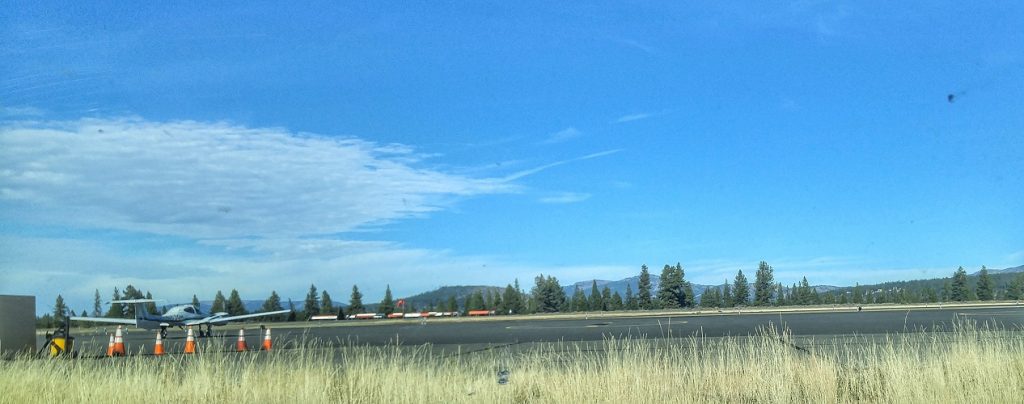
Minutes later, I was ripping around the corner into the Truckee-Tahoe Airport, feeling as though an aura of anticipation was contaminating the very air around me. Reminding myself that showing up to my first flight lesson at 12:30pm driving 20mph over the speed limit may not leave an ideal first impression, I begrudgingly slowed my roll and carefully parked facing the tarmac.
Though I was pretty sure I knew where the flight lessons were, I headed to the main airport building to confirm my directions. As soon as I stepped out of my car, I realized that it was incredibly windy. A creeping sense of disappointment threatened to quell the excitement still bubbling through my skin, and so I tried to brush the thought away. I really wanted to get up in the air, but I know that flying in the Sierra Nevada mountains is considered to be quite dangerous, even for experienced pilots, and that wind and small planes don’t really get along.
After being told where the flight lessons are by the nice young man in the tower, I hustled myself and my overfull backpack to the building on the other side of the airport. When I got there, a table full of women directed me back to the main building, where my flight instructor was sitting with another student. Turning on my heel, I rushed back over to the lobby. 12:37pm. Yikes.
As I walked in to the lobby of the main building, yet again, I must have looked very obviously lost, because a woman with long dark hair was staring at me intently. As I turned to head back up the stairs to the tower-not-tower (Truckee doesn’t have a “control tower” like I think of from the movies, but they do have a control tower shaped building full of helpful people with weather and maintenance reports), I saw the dark-haired lady rise from the plush red leather chair she was sitting in.
“Carly? Are you Carly?”
“You must be Sarah!”
Getting Down to Business:
After a brief introduction, I was instructed to take a seat while she finished up with Adrian, a young British professional athlete who wants to get his sport license. As I waited, I heard them discuss scheduling his solo flight, and landing with strong winds. After they finished, Adrian shook my hand, wished me luck, and was immediately roped into a conversation with a bunch of other young pilots. What a tight-knit little community, I thought to myself, as I followed Sarah back upstairs to the tower-not-tower. Once there, she checked out a keycard and we settled into a private room to officially submit my student pilot certificate application, which was equal parts thrilling and tedious paperwork. Maybe not equal parts… there was a lot of paperwork on a very not-user-friendly government website, but it was worth the frustration.
As I digitally signed the Pilot Bill of Rights (which is a lot shorter than I anticipated it being), I was in! I got my FTN (FAA [Federal Aviation Administration] Tracking Number), and then we set off on a short, windy walk to go meet my flying buddy: a red and gold Cessna 172m.
Back Across the Tarmac:
Sarah got her private pilot’s certificate in 2008 and has been a flight instructor for just as long. She looked concerned as we crossed the tarmac to the avocado-colored hangars, long dark hair whipping violently around her face.
“It’s pretty windy,” Sarah said hesitantly. “I tried to get in touch with you last night, I’m not sure if we’ll be able to fly today.”
I took a deep breath, resigning myself to the situation. I nodded, shrugging. “I’m just happy to be here,” I said with a smile. And it was true. Though I wasn’t yet airborne, in my mind every second spent at the airport was one second closer to my first flight.
To our left, Sarah spotted a sad looking single-propeller plane hunching awkwardly to one side, like a sinking ship. “That must be the plane,” Sarah said, gesturing. “Earlier today we had a gear-up landing, the pilot was really lucky.” Lucky? With my incredibly limited knowledge of airplane maintenance and repairs, any sort of crash, no matter how small, seems like a traumatizing and incredibly expensive accident.
As we got nearer to the plane which was parked near the Sierra Aero Flight School, we could see the scratched and crunched belly bearing the reminders of the minor crash hours before. Examining the damage, I asked, “So, how is this lucky?”
Sarah animatedly showed me, using her hands, the weight shifts of a landing aircraft. “And as you can see,” she says, dipping the heel of her palm towards, illustrating the nose of a plane dipping while preparing to land, “the propeller will keep spinning if the engine is running, smashing the blades against the ground and completely destroying the propeller. Somehow, this planes’ propeller didn’t hit the ground, so this pilot is very lucky.”
Behind Hangar Doors:
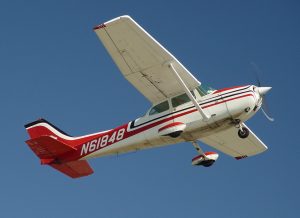
We arrived at the hangars and entered in through the side door, around an electric bicycle with a basket, many, many different types of mechanical tools and parts, and wires and cords draped over everything like vines in the jungle. Stepping over and around the clutter of a communal hangar, we approached the little plane, admiring the red and metallic gold detailing, and being proud of myself for knowing what a wing strut is. As I went to hop into the cockpit, the 1970’s slammed me right in the face, almost knocking me off my feet. Everything had the tawny-brown 70’s tinge, from the orangey-brown carpeting and seats to the oh-so-disco sepia instrument panel. It was a blast from the past I was more than excited to discover. Something about the dated interior made the experience feel more tangible, more real, like a nostalgic dream turned reality. Maybe it was spending a childhood at airshows, touring the cockpits of old planes with my little brother that made the experience so familiar and comforting.

I sat in the pilots’ chair, looking at the gauges and panels, imagining myself as a child with an aviator cap two-sizes too big falling over my eyes, as I happily pretend to be a real pilot. I felt giddy and overwhelmed, barely resisting the urge to touch everything. I was paralyzed at the thought that eventually, I would know what all of these gauges did, and depend on them for the safety of myself, my passengers, and of course, my plane.
Sarah told me briefly what each of the gauges do, and told me that on the ground, pilots steer the plane with their feet! I stared at her, mouth agape- that seems so alien and un-intuitive! I genuinely thought she was joking with me at first. (On the drive home I would try and imagine steering my car with my brake and gas pedals; it was a strange concept.)
Even more fun was discovering the thrust, which Sarah let me play with while she discussed “adjusting the richness” of the fuel/air mix, among other things. I felt as though I was playing with a very large, very expensive Bop-It! toy as I pulled and pushed, turned and pressed, and otherwise fiddled with an entire cockpit’s worth of gadgets.
Wrapping Up My First Flight Lesson:
After I had exhausted all of my questions, we walked around the outside of the plane, tilting and moving the ailerons and flaps, and poking at every little tube or valve sticking out in seemingly random places. I ran my fingers along the cold, curved panel on the bottom of the rudder. This disruption from symmetry caught my eye, and Sarah explained that planes all tend to drift one way or the other, and because the Cessna 172m student pilot plane had been through some tough times, they had to curve the rudder more aggressively to counteract from excessive drifting to the left.
We moved to the front, patting the nose of the little plane, which was covered with what looked like a sleeping bag. “Aww, does the little plane get cold?” I joked, gesturing to the blanket. Sarah laughed before explaining that it takes considerably more energy to “cold-start” an airplane, and so to reduce that strain, the plane is left with a heating blanket over the engine, keeping the oil warm and fluid.
Gathering our stuff from the pile we left it in on the concrete floor of the hangar, we headed back to the Sierra Aero Flight School, where I would fill out my renter’s agreement form, officially committing to earning my private pilot’s license. Again the wind hit us, carrying dust and engine noise across the airport. We set up our next appointment, and because I didn’t get off the ground, Sarah gave me a discount on the hourly instructor rate, so instead of a $75 tour of the airport, I only had to pay $60 for all the paperwork. I thought it was an appropriately expensive introduction to the cost of aviation, and so I reconciled myself with the idea of eating only instant ramen noodles and trail mix with hopes that I could afford to pay my instructor and rent a plane.
Deciding that earning my wings was more than worth the cost of getting there, I practically skipped to my car, infected with glee simply by sitting in the cockpit of a parked plane. I imagined I looked like a crazy person, half-skipping across the tarmac, following the painted yellow lines that would lead me back to the parking lot with a grin on my face rivaling any canary-eating cats’, counting down the days until my next flight lesson, and my first adventure behind the yoke.






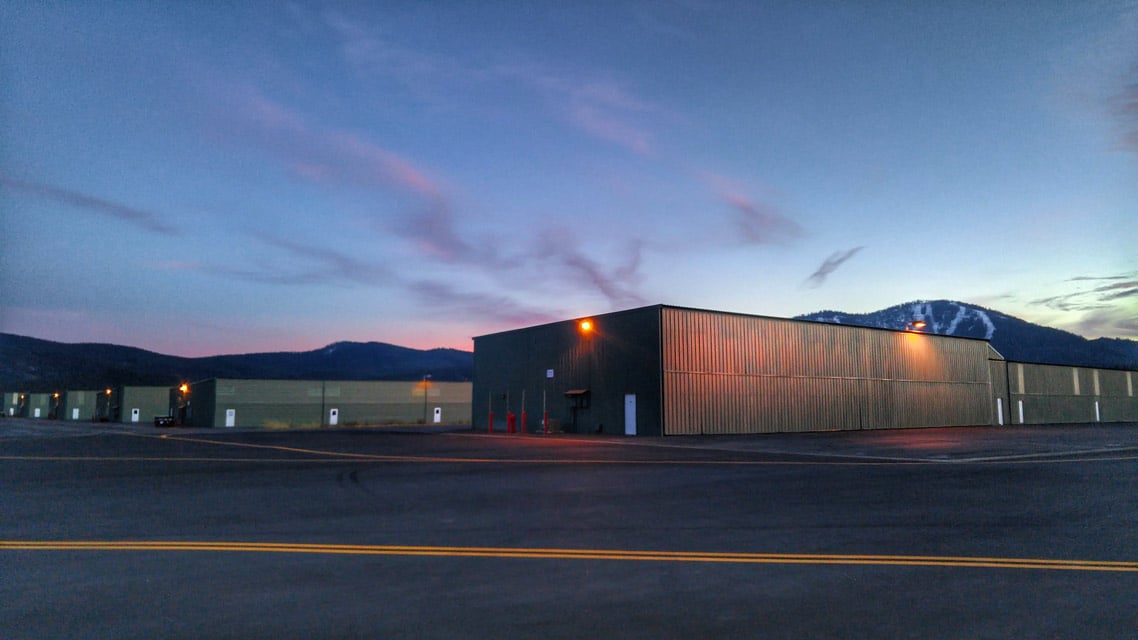
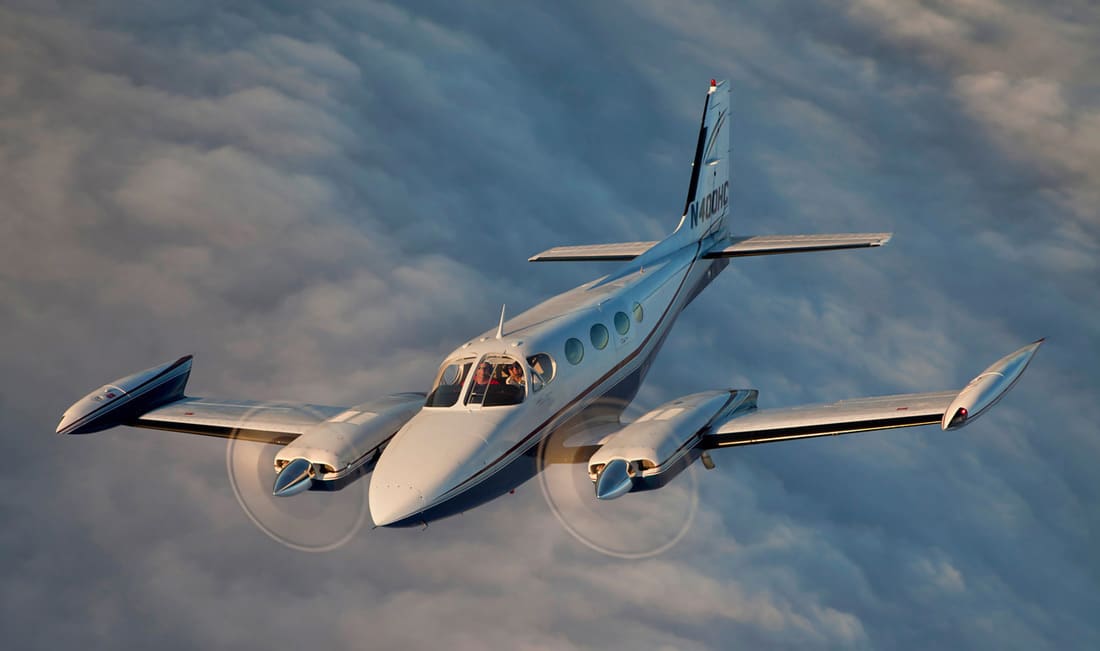



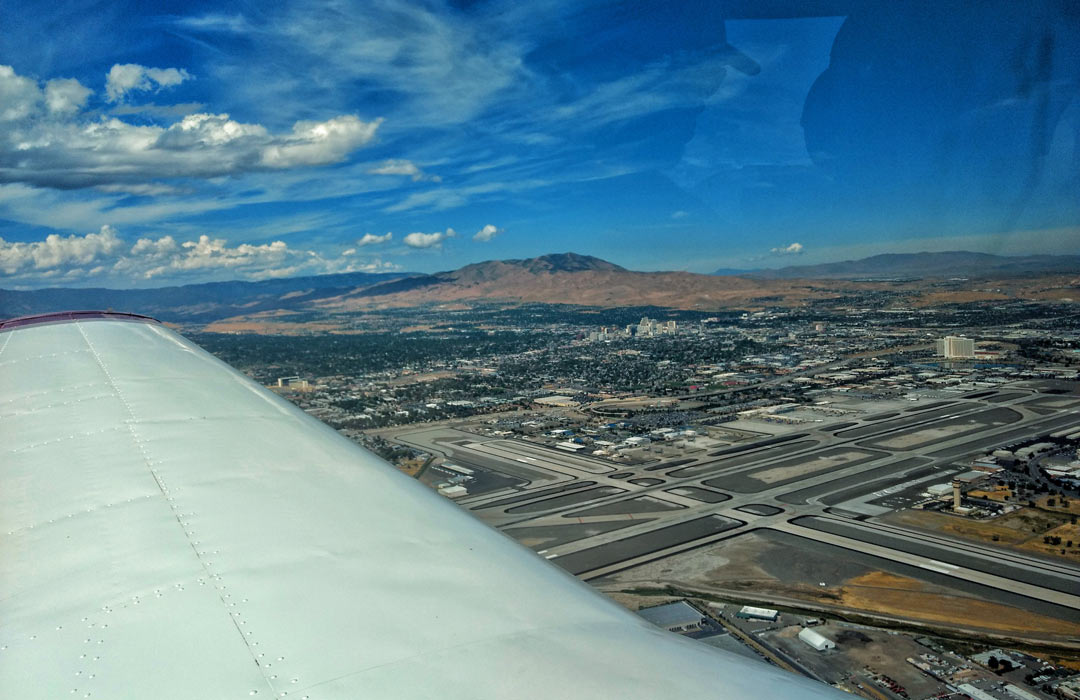



Leave a Reply